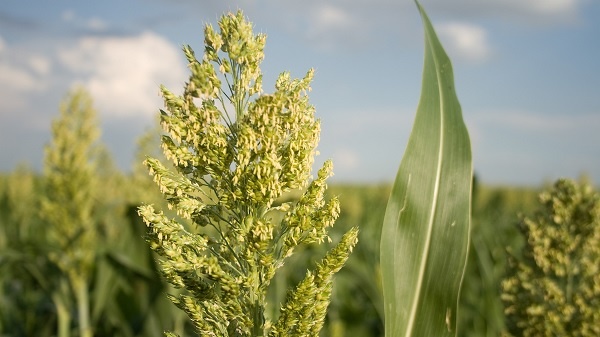
To assess the influence of drought on sorghum yields, researchers employed a computer model that links plant growth to weather conditions.
(Physics World) – Sorghum yields in the Ethiopian highlands could decrease as intense El Niño events become more common, a team from the US and Ethiopia has found. Climate change is expected to increase the region’s rainfall overall but droughts are likely to become more prevalent early in the growing season when crops are vulnerable.
Although the researchers acknowledge uncertainty around the precise pattern of the changes, their predictions indicate that sorghum yields in the worst-affected years could fall by as much as 40%—an effect that is overlooked by studies that focus only on annual changes.
As a drought-resistant grass that can thrive in unimproved soils, sorghum is the grain of choice in semi-arid environments where fertilizer inputs are economically unfeasible. The plant has become especially important in sub-Saharan Africa, where it’s grown as a subsistence crop on small farms and on fields not suited to other species.
Sorghum’s tolerance to drought might suggest that its reliability as a food crop will continue even as climate change alters patterns of rainfall. The way that dry periods are distributed through the growing season, however, is at least as important for the crop as the amount of rainfall over the season as a whole.
To assess the influence of drought on sorghum yields, Michael Eggen of the University of Wisconsin-Madison in the US and colleagues employed a computer model that links plant growth to weather conditions.
The simulations showed that, though robust to rainfall deficits at the seasonal scale, sorghum yields are acutely sensitive to water shortages in June, when seeds are planted and early growth takes place. Such conditions occurred in 2015, when a particularly strong El Niño led to harvests that farmers consider to be as bad as or worse than those associated with the famines of the 1980s and 90s.
Eggen and colleagues combined the simulation results with climate forecasts from 14 general circulation models chosen for how well they relate rainfall in the Ethiopian highlands to the El Niño Southern Oscillation. The researchers applied the models to two scenarios: one in which the concentration of carbon dioxide in the atmosphere levels off at around 600 parts per million (ppm), and one in which it rises to well over 1000 ppm by 2100.
Continue reading this story at Physics World

It is shocking news and evaluating technological based crops productivity associted climate change is realy a good start. I had practiced the bad event that the low rainfall rained on Jun during the 2015 El Niño event. It was the cause for total loss of the 25 hectare sown sorghum. Actually, the sorghum plant was reached the flowering stage and the upcoming rain had stoped and no more sorghum yield was obtained.sadly, I am not a farmer and it was my first trial renting the land from relative, and had made me to shock. This event was happened in Hummera, Tigray Ethiopia which is the semi arid area and sorghum is the dominant food item for the livelihood of the community.